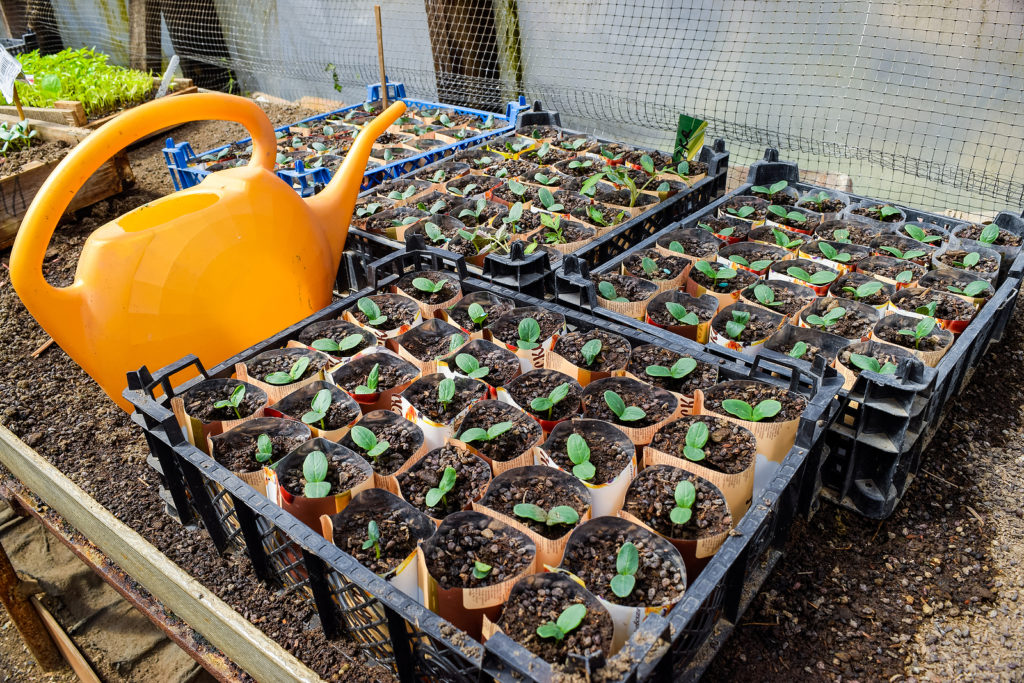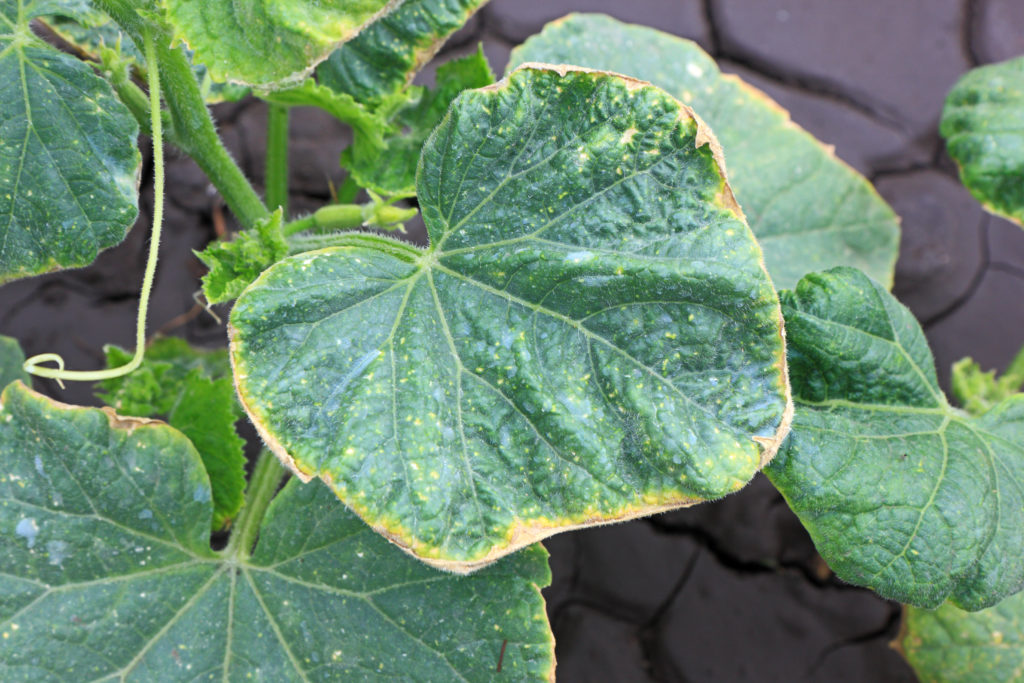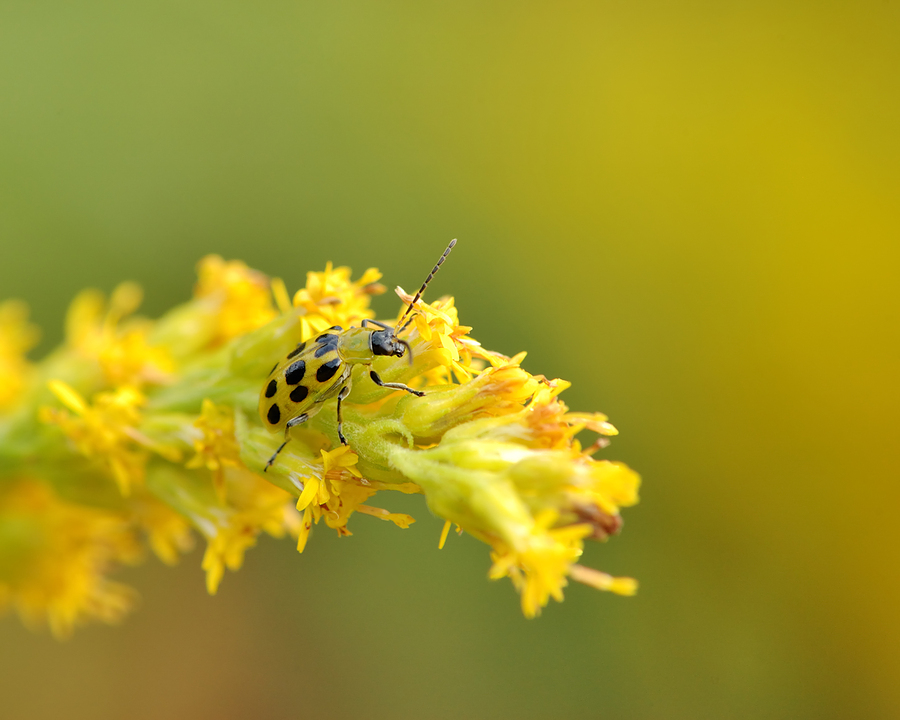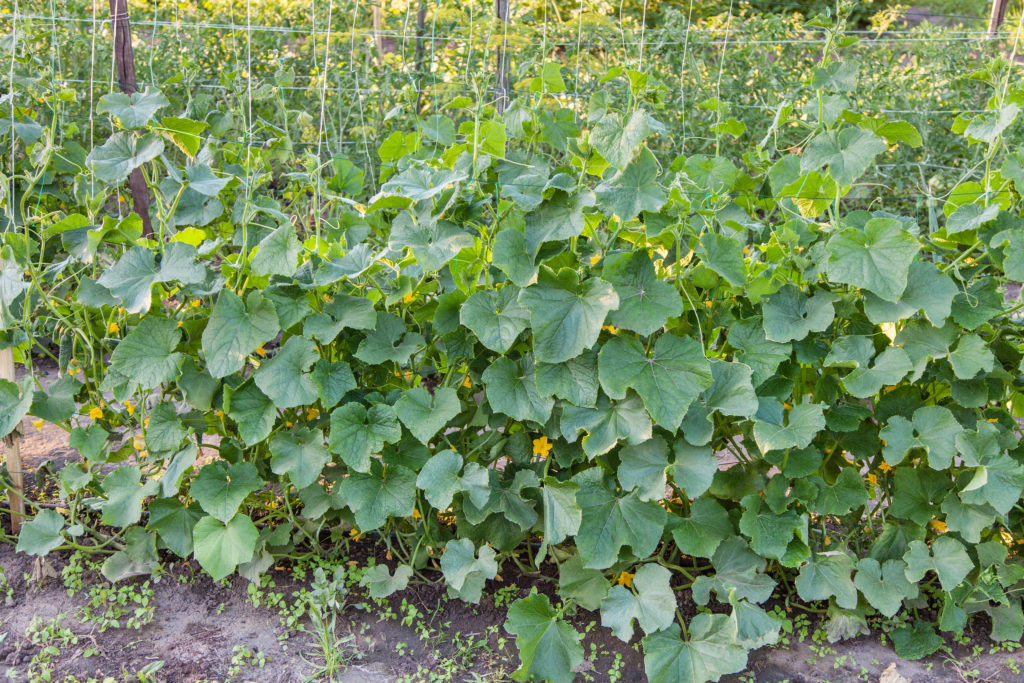As a seasoned gardener with over 30 years of experience growing cucumbers, I’ve encountered my fair share of pests and diseases that can threaten a healthy harvest. Whether you’re a first-time cucumber grower or a seasoned gardener, understanding the common problems that cucumbers face is crucial to maintaining a thriving crop. In this troubleshooting guide, I’ll walk you through the most common cucumber pests and diseases, sharing practical solutions that I’ve used over the years to keep my plants healthy and productive. By recognizing the signs early and knowing how to address them, you can prevent significant damage and enjoy a bountiful cucumber harvest.
From aphids to powdery mildew, cucumbers are susceptible to a variety of threats that can impact their growth and flavor. Drawing on my hands-on experience, I’ll cover how to identify these issues, how to prevent them from spreading, and the best organic and chemical control methods for cucumber plants. Armed with this knowledge, you’ll be equipped to troubleshoot and protect your cucumber plants from the most common problems, ensuring they stay healthy and produce high-quality fruit all season long.
Cucumber Pests
Aphids, cucumber beetles, and other beetles and insects can attack cucumbers. Floating row covers will protect young plants before they bloom. After blooming, pinch out infested vegetation or hose off aphids or cucumber beetles, and hand-pick cutworms, slugs, snails, and squash bugs.
Squash beetles and striped cucumber beetles can be regular visitors–feeding at night. (Cucumber beetles are attracted to the bitter compound in the skin of many cucumber varieties.) Handpick these pests in the early morning or plant varieties that don’t have the bitter compound–‘Holland’, ‘Aria’, and ‘Lemon’ are good choices.
Turn away cucumber beetles when plants are young. Cucumber beetles eat plants and spread disease. Set floating row covers over seeded rows and seedlings to exclude cucumber beetles early. Lift row covers when plants begin to flower.
- Cucumbers can be attacked by aphids, cucumber beetles, squash bugs, and slugs.
- Control aphids by hosing them off with a blast of water or pinching out infested vegetation.
- Cucumber beetles chew holes in leaves and can spread cucumber bacterial wilt when feeding on plant tissue. Hand-pick them off the vines and destroy them.
- Squash bugs suck plant sap causing leaves to wilt. Squash bugs will also attack seedlings. Dust plants with diatomaceous earth around the base of plants.
- Slugs can scrape ragged holes in leaves. Spread diatomaceous earth around the base of plants.
Cucumber Diseases
Several plant viruses and fungi can plague cucumbers. Plant disease-resistant varieties, and remove and destroy infected plants. Do not grow cucumbers or their relatives, such as squash and melons, in the same spot more often than once every 3 years.
Prevent fungal disease from getting a grip on the garden. Avoid overhead irrigation; use a soaker hose or drip irrigation. Spray vines early in the day with compost tea to protect plants from fungal spores. Keep the garden free of weeds which can harbor pests and diseases.
Cucumbers can also be plagued by wilts and powdery mildew. Plant disease-resistant varieties: look for letter codes indicating diseases resistant, leaf spot (LS), anthracnose (A), wilt (BW), mosaic (M), scab (S), and mildew (DM).
- Cucumber plants are susceptible to scab, mosaic, and mildew.
- Keep the garden clean of debris and weeds that can harbor pests and diseases.
- Remove diseased plants immediately; put them in a paper bag and throw them in the trash to avoid the spread of disease.
- Plant disease-resistant varieties. Look for the following coding to indicate disease resistance: leaf spot (LS), anthracnose (A), bacterial wilt (BW), mosaic (M), scab (S), and downy mildew (DM).
- Bacterial wilt is spread by cucumber beetles; plants suddenly wilt and die just as they begin to produce. Control beetles as soon as they appear.
- Powdery mildew and downy mildew, fungal diseases, will cause cucumber leaves to turn grayish-white late in the season. Slow the spread of fungal diseases by spraying plants with horticultural oil or neem oil.
- To help prevent fungal diseases, plant resistant varieties, and space plants further apart to increase air circulation.
More on cucuGive cucumbers the right conditions–warm, sunny weather and consistent water–and they will be one of your top-producing garden crops.
To keep ahead of cucumber problems, pests, and diseases, here is a troubleshooting list of possible cucumber problems with brief control suggestions.

Here’s a guide to common cucumber problems with soloutions:
Seed and Seedling Problems
Plants are eaten or cut off near the soil level.
Cutworms are gray grubs ½- to ¾-inch long that can be found curled under the soil. They chew stems, roots, and leaves. Place a 3-inch paper collar around the stem of the plant. Keep the garden free of weeds; sprinkle wood ash around the base of plants.
Small plants turn yellow and break off.
Southern corn rootworm is the larvae of the spotted cucumber beetle (See below). Cultivate the soil before planting to expose larvae and interrupt the insect’s life cycle.

Leaf Problems
Leaves curl under and become deformed and yellowish.
Aphids are tiny, oval, and yellowish to greenish pear-shaped insects that colonize the undersides of leaves. They leave behind sticky excrement called honeydew which can turn into a black sooty mold. Use insecticidal soap.
Leaves turn pale green, yellow, or brown; dusty silver webs on the undersides of leaves and between vines.
Spider mites suck plant juices causing stippling. Spray with water or use insecticidal soap or rotenone. Ladybugs and lacewings eat mites.
Leaves yellow; tiny white-winged insects around plants.
Whiteflies will congregate on the undersides of leaves and fly up when disturbed. Remove infested leaves and the whole plant if infestation is serious. Introduce beneficial insects into the garden.
Coarse white speckling or stippling on the upper surface of leaves; leaves may be brown.
Leafhoppers are green, brown, or yellow bugs with wedge-shaped wings. They suck the juices from leaves and stems. Use floating row covers to exclude bugs; spray with insecticidal soap.
Trails and tunnels in leaves.
The leafminer larvae tunnel inside leaves. Destroy infected leaves and cultivate the garden to destroy larvae and keep adult flies from laying eggs. Cover crops with floating row covers.
Water-soaked blotches on leaves–not enlarging past leaf veins; water-soaked spots can appear on fruits
Angular leaf spot or bacterial spot is a waterborne bacterium that causes irregular geometric patterns on leaves. Spots may turn yellow and crisp. Avoid wetting foliage with irrigation. Prune off infected leaves and stems. Clean up garden. Plant disease-resistant varieties. Rotate crops for up to 2 years.

Holes chewed in leaves, leaves skeletonized; runners, and young fruit scarred.
Spotted cucumber beetle is greenish, yellowish, ¼ inch (7mm) long with black spots and a black head. Striped cucumber beetle has wide black stripes on the wing covers. Handpick; mulch around plants; plant resistant varieties; dust with wood ashes.
Leaves have yellow specks that turn brown, then black; vines wilt from the point of attack.
Squash bug is a flat, shield-shaped black or brownish bug with a triangle on its back; it sucks juices from plants. Trap adults beneath boards in spring, hand pick and destroy.
Round white powdery spots and coating on leaves.
Powdery mildew is caused by fungal spores. Spores germinate on dry leaf surfaces when the humidity is high; spores do not germinate on wet leaves. Common in late summer or fall but does not result in the loss of the plant. Avoid water stress. Pick off infected leaves.
Irregular yellowish to brownish spots on upper leaf surfaces; grayish powder or mold on undersides.
Downy mildew is caused by a fungus. Improve air circulation. Plant disease-resistant varieties. Rotate crops. Keep the garden free of plant debris.
Mottled, distorted leaves.
Mosaic virus causes leaves to become thickened, brittle, and easily broken from plants; plants are stunted and yields are poor. The virus is spread from plant to plant by aphids and leafhoppers. Remove diseased plants. Remove broadleaf weeds that serve as virus reservoirs.

Whole Plant Problems
Knots, galls, or swollen beads on roots; plants wilt; poor yield.
Nematodes are microscopic worm-like animals that live in the film of water that coats soil particles; some are pests, and some are not. Root-knot nematodes feed in the roots and stunt plant growth. Most common in sandy soils. Rotate crops. Solarize the soil with clear plastic in mid-summer.
Plants wilt and die beginning with crown or older topmost leaves.
Verticillium wilt is a soilborne fungus. Light brown streaks can be seen in the stem split lengthwise. Rotate crops. Avoid soil previously planted in cucumbers and family members, potatoes, peppers, eggplant, and tomatoes.
Vines wilt suddenly and die starting with one or two leaves.
Bacterial wilt clogs the circulatory system of plants. It is caused by bacteria that live in cucumber beetles and is seen often where the soil stays moist. Remove and destroy infected plants before the disease spreads. Control cucumber beetles with rotenone or sabadilla. Wash hands and clean tools with a bleach solution.
Plants are stunted and yellow; runners gradually die.
Fusarium wilt is a fungal disease that infects plant vascular tissues. Fungal spores live in the soil and can be carried by cucumber beetles. Plant disease-resistant varieties. Rotate crops. Remove and destroy infected plants. Fungicides are not effective.

Fruit Problems
Water-soaked spots–sunken, brown, or black–on fruit.
Belly rot or bacterial spot or blight. Remove and destroy infected fruits. Remove all plants and plant debris at the end of the season. Promote good drainage by adding organic materials to planting beds. Avoid overhead watering. Rotate crops. Stake or cage plants to keep fruit off the ground.
Water-soaked or pale green spot on leaves that turn white; fruit cracks.
Scab is caused by soilborne bacteria. The disease can be cosmetic. Plant disease-resistant varieties. If scab occurs, change varieties next year. Sulfur may be worked into the soil to make it slightly acidic and reduce disease.
Early flowers don’t set fruit.
A couple of possible reasons: (1) the first flowers to appear are male; female flowers appear next. Fruit is produced by female flowers. Wait until female flowers appear and are pollinated. Plant all-female (gynoecious) cucumber hybrids–a few male plants will be added to the seed mix. (2) There may not be enough pollinators, mostly bees, to carry the pollen from male to female flowers. Pick off male flowers and dust the pollen into the female flowers.
Plants produce few fruits, mostly foliage.
Plants are likely spaced too close together. Space plants at recommended distances, 8 to 12 inches apart. Plants that are spaced too close or too far apart yield fewer fruits as a result of poor pollination.
Plant fruit but then stop fruiting.
Pick fruit as soon as it is the right size to use. This will allow the plant to put energy into additional fruit production. If you fail to pick mature fruit, the plant will quit producing.
Fruit tastes bitter.
Uneven watering will cause plants to produce bitter compounds that affect the taste. Uneven temperatures–swings of temperature by 20° or more–will do the same. Keep the soil evenly moist and mulch to conserve soil moisture. Grow varieties that do not turn bitter: Marketmore 70 is a bitter-free cucumber.
Related Posts:
Ultimate Beginner to Expert Guide to Growing Cucumbers
Planning and Planting
- The Best Cucumber Varieties for Your Garden
- How to Plant Cucumber Seeds and Seedlings: Site, Spacing and Soil Needs
- Growing Cucumbers in Containers: Space -Saving Tips for Success
Care and Maintenance
- Watering, Feeding, and Caring for Cucumbers: A Complete Guide
- How and When to Prune Cucumbers for Healthier Vines
- How to Grow Cucumbers That Are Not Bitter Tasting
- Cucumber Flowering, Pollination, and Fruit Formation: Ensuring Maximum Yield
Troubleshooting and Pest Control
Harvest and Beyond
- Nine Cucumber Serving and Cooking Tips
- When and How to Harvest Cucumbers
- How to Store and Preserve Cucumbers for Freshness and Flavor
More tips:
Vegetable Garden Organic Weed Control
Vegetable Garden Organic Pest Control
Vegetable Garden Disease Problem Solver
Garden Planning Books at Amazon:
- Vegetable Garden Almanac & Planner
- Kitchen Garden Grower’s Guide Vegetable Encyclopedia
- Vegetable Garden Grower’s Guide
- Tomato Grower’s Answer Book



